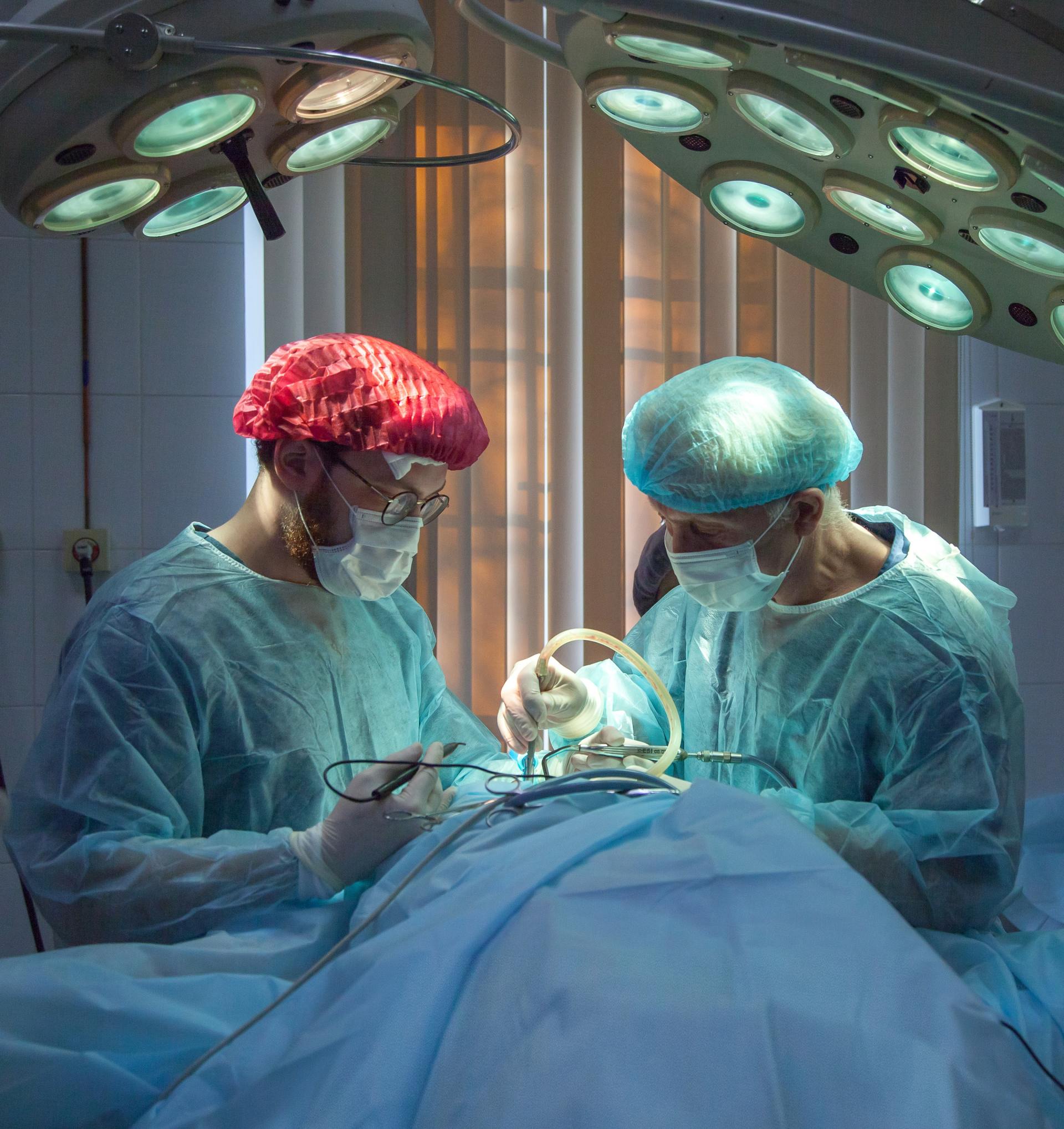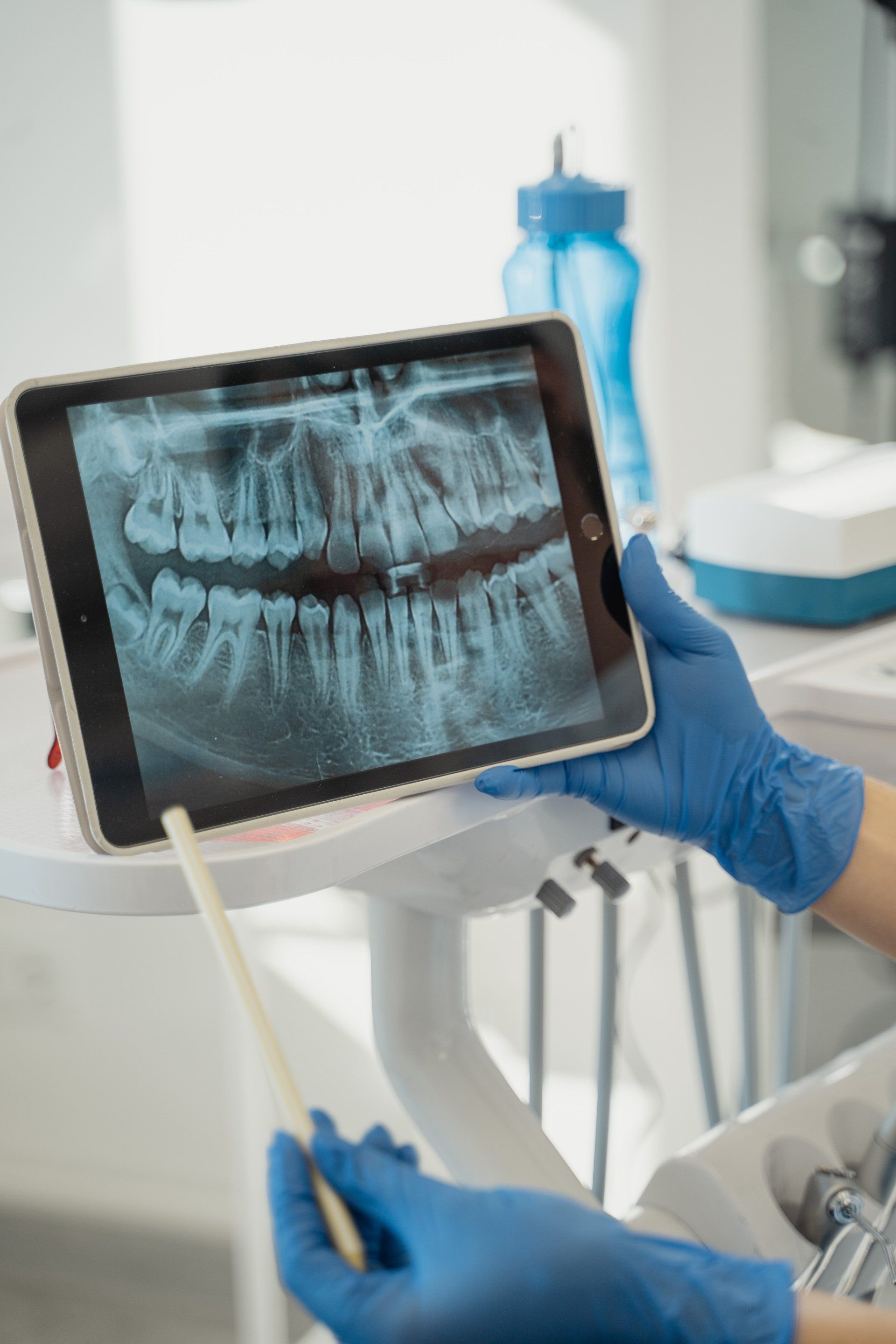The business case for more robust pre-clinical research
Veronika Valdova • February 13, 2020
Published 20 October 2017
From a business perspective, it is essential to create a safe avenue for communication of concerns regarding the drug candidate’s efficacy, safety, toxicity, or pharmacological function immediately as the researchers become aware of them.
Compliance, IND submissions, and business incentives
The Food and Drug Administration (FDA) requires researchers to provide specific data about new drug candidates before the drug can to proceed to human clinical trials. The IND submission package includes preclinical data on animal pharmacology and toxicology. This data serves as proof that the drug candidate is reasonably safe for human trials, manufacturing information to ensure consistent quality of the product, and clinical protocols and investigator information. The application also includes information on clinical professionals and a commitment to obtain informed consent and a review by the institutional review board (Food and Drug Administration, 2017).
The pharmacology/toxicology package contains pharmacology studies, acute, subchronic and chronic toxicity studies, special toxicity, carcinogenicity, reproduction toxicity, mutagenicity and absorption, distribution, metabolism and excretion (ADME) studies (Food and Drug Administration, 2017). This information generally comes from in vitro tests, computer modeling, and from experiments on laboratory animals. All experiments on animals in the U.S. have to conform to Part 58 of Title 21 of the Code of Federal Regulations Good Clinical Practice for Nonclinical Laboratory Studies (eCFR — Code of Federal Regulations, 2017).
From a business risk perspective, compliance and due diligence are the easy parts. The hard part is the predictive power of this information, whether or not the drug candidate has the potential to show safety and efficacy in clinical trials and obtain approval. There is a universal pressure to conduct these tests in the timeliest manner practicable, to pass the IND submission landmark. This step typically indicates the company’s willingness to undertake a considerable investment in clinical trials, without any guarantees of success. The impact of IND submission on stock price is typically neutral (Picardo, 2017). The dropout rate is exceptionally high for new molecular entities with the potential of becoming first-in-class. The dropout rate in phase III is especially worrying.
Publication bias in preclinical research
The majority of preclinical research never reaches the publication stage. For commercial research, the reasons mainly include the need to protect intellectual property. Groundbreaking research in the biotech field helps to make a business case for investors. On the other hand, academic research often has no such ambitions, the publication of the results is often part of the contract or grant award, and the main obstacles to publication are negative or inconclusive results and the lack of statistical validity. Verification of claims made in pre-clinical research based on published research is difficult, if not impossible. While all human clinical trials available in databases and registries (World Health Organization, 2017) and (US. National Institute of Health, 2017), no such registry exists for animal studies. According to Matosin et al. (2014), the primary motivation for publication in academic circles is to have their own research cited, hence the reluctance to invest time into attempts to publish negative or inconclusive results (Matosin et al., 2014).
Ter Riet et al. (2012) explored what are the main factors whether preclinical research is published or not, what is the extent of non-publication, and what are the consequences of the lack of publication. Academic research is more likely to be published (50%) than commercial research (10%). The main causes of non-publication were the lack of statistical significance and the inability to pass peer review (ter Riet et al., 2012).
Reproducibility of pre-clinical research
The low reproducibility of pre-clinical research is an essential source of assumptions made in the early stages of preclinical research. Freedman et al. (2015) argue that 50% of all preclinical research is irreproducible. Research that produces no useful results exceeds US$28 billion in the United States only. The reasons include study design, methodology, materials, reference standards and reagents used, laboratory protocols, and analysis and reporting (Freedman, Cockburn and Simcoe, 2015).
The predictive power of animal research data
The predictive power of data from preclinical research is apparent from the attrition rate in clinical trials. The Tufts Center for the Study of Drug Development estimates the cost of a newly approved drug to be at about US$2.6 billion. On average, about 60% drop out in Phase I of clinical research, and only 8% percent of drug candidates from the discovery phase reach the market. The attrition rate in the preclinical stage is approximately 70%. Unsurprisingly, the highest attrition rate is among first-in-class drugs (Booth, 2017).
Early failures
The lack of reliability and predictive power of data from preclinical research costs human lives as well. While these events are sporadic, their consequences are potentially profound. In 1993, a hepatitis B drug fialuridine had to be dropped from a Phase II trial because of severe liver toxicity. Of seven patients, five died, and another two only survived due to a liver transplant. The accident prompted the development of more sensitive tests for the detection of liver toxicity. The cause of the deaths was a rare type of long-term toxicity undetected in preclinical trials (Manning and Swartz, 1995).
The TGN-1412 First-In-Man failure became one of the most studied clinical research disasters due to the unanticipated toxicity of the drug. Not only the accident led to an overhaul of the rules for Phase I trials, but it also caused serious concerns about the predictive power of animal studies. The life-threatening symptoms of a cytokine storm were the result of assumptions made about the biology of the drug in preclinical studies. Research conducted on cynomolgus monkeys did not translate into the human biology of an immune response (Attarwala, 2010).
The most recent instance of unanticipated toxicity occurred in 2016. Healthy volunteers suffered severe neurotoxicity following a new experimental drug BIA 10-2474. The experimental drug is a reversible inhibitor of fatty acid amine hydrolase (FAAH). Its function is to increase the levels of endocannabinoids. Cumulative toxicity that was to blame was not detected in preclinical studies (Kerbrat et al., 2016). In response to the disaster, the European Medicines Agency (EMA) published a concept paper with suggestions on how to improve the safety of First-in-Man trials (European Medicines Agency, 2017).
Phase III failures
The reasons why drugs fail in phase III boil down to a flawed basic science, inappropriate animal disease models, the use of and incomplete understanding of the disease biology and targets, or uncorrected assumptions made earlier in the process of drug discovery and development. The clinical study design is an essential factor because of the use of surrogate endpoints. Additional factors to consider are changes in exclusion and inclusion criteria and patient population, inappropriate dose selection in the transition from Phase II to Phase III, and operational execution. Overly optimistic presentation of findings, leading to “go ahead” decisions for projects that should have been stopped (Shanley, 2017).
Less discussed causes of phase III failures are of organizational origin. It is human nature to protect their work and own projects to ensure continuing participation in projects that receive the organization’s approval and funding. Halting a project is an event every project manager prefers to avoid. The reasons are evident and understandable – from a career perspective, it is always better to participate in a single long project than in multiple projects that all failed in a short time. Bringing up concerns regarding the viability of a project will always represent a career risk to the messenger.
Presentation of unwelcome news, especially if this happens later in the process, is likely to produce controversy. In the high consequence environment of pharmaceutical development, any assumption made earlier in the process can prove extremely costly if uncorrected once more information becomes available. From a business perspective, it is essential to create a safe avenue for communication of concerns regarding the drug candidate’s efficacy, safety, toxicity, or pharmacological function immediately as the researchers become aware of them.
Any plan must proceed on assumptions. An information collection plan needs to exist to facilitate the timely replacement of assumptions with facts as the situation develops. Indicators of risks and potential adverse consequences, specifically potential safety concerns and lack of efficacy, have to be recorded in the original research plan and tracked throughout the drug development process. These Priority Information Requirements (PIR) and Critical Information Requirements (CIR) need to correlate with decision-making to be meaningful as a protective mechanism against the risk of an extremely costly late-stage failure (Sheckler, 2017).
In the drug development industry, a pro-active feedback loop between pre-clinical and clinical stages of development needs to exist to facilitate continuous verification of assumptions and consequent adjustment of plans.
Emerging technologies
New technologies such as human organs-on-a-chip (Wyss Institute, 2017) have the ability to transform preclinical research fundamentally. The technology involves a dynamic 3D model of human tissue on a computerized model that allows a detailed understanding of the disease biology and the effect of drug candidates on disease targets. The number of repetitions is near endless, giving the results the necessary statistical power. It is safe to assume that technology will become more affordable as it matures. Metabolism of xenobiotics, including pharmaceuticals, is a complicated affair that is difficult to observe directly in living creatures, animals, and humans alike. Our understanding of absorption, distribution, metabolism, and excretion, and lack thereof, directly depends on the tools we have. At a theoretical level, we all know that the metabolism of xenobiotics depends on the genetic makeup of the cell, qualitative characteristics, and capacity of cytochromes CYP450 to process the compound, one way or another. Yet in clinical trials, we still heavily rely on chance. New technologies allow in-vitro and in-silico modeling of scenarios that will inevitably occur when the drug reaches real patients such as hypoxic state, raised levels of inflammatory markers, and decreased liver capacity due to NAFLD / NASH or perfusion changes. Abaci and Shuler (2015) argue that their technology can be used for preclinical modeling in drug development.They explored methods on how to achieve scaling up of the organ models to replicate organ-organ interactions. μOrgans-on-a-chip (μOOC) can be used in preclinical research to mimic a physiological system using human cells to predict behavior or validate assumptions made in earlier stages of research.
Once the PK/PD is known, μHuman-on-a-chip (μHOC) can be used to model inter-organ interactions and to model and predict drug partitioning, metabolism rate, permeability rate, and so on (Abaci and Shuler, 2015). Oleaga et al. (2016) successfully utilized the system for modeling organ toxicity of new drugs under development. The model was tested on drugs with known toxicity on functional models of cardiac, muscle, liver, and neuronal tissue. The results showed promising results in regards to the predictive value of the models for in-vitro toxicity screening (Oleaga et al., 2016).
Better times ahead?
The published materials seem to be a tip of the iceberg of extensive research that explores the potential of the technology in drug discovery and development. The reduction of attrition rate in clinical trials and especially in the advanced stages, requires a combination of technological solutions and organizational changes. Information without appropriate action is meaningless.
Facilitation of appropriate organizational response to new information reduces uncertainty for the organization even if the information is not favorable. Timely termination of a potentially costly project should is a good outcome that is good for business and should not result in adverse consequences for the affected individuals and teams.
References
eCFR — Code of Federal Regulations (2017). eCFR — Code of Federal Regulations: Title 21, Chapter I, Subchapter A, Part 58: Good Laboratory Practice for non-clinical laboratory studies. [online] Ecfr.gov. Available at: https://www.ecfr.gov/cgi-bin/text-idx?SID=57e31d5c0911f0938111f968430b4fd5&mc=true&tpl=/ecfrbrowse/Title21/21cfr58_main_02.tpl [Accessed 1 Jun. 2017].
Food and Drug Administration (2017). Investigational New Drug (IND) Application. [online] Fda.gov. Available at: https://www.fda.gov/drugs/developmentapprovalprocess/howdrugsaredevelopedandapproved/approvalapplications/investigationalnewdrugindapplication/default.htm [Accessed 2 Jun. 2017].
Food and Drug Administration (2017). Drugs: Guidance, Compliance & Regulatory Information – Guidances (Drugs) – Pharmacology / Toxicology. [online] Food and Drug Administration. Available at: https://www.fda.gov/drugs/guidancecomplianceregulatoryinformation/guidances/ucm065014.htm [Accessed 2 Jun. 2017].
Shanley, A. (2017). Preventing Phase III Failures. [online] Pharmtech.com. Available at: http://www.pharmtech.com/preventing-phase-iii-failures [Accessed 2 Jun. 2017].
World Health Organization (2017). ICTRP Search Portal. [online] Apps.who.int. Available at: http://apps.who.int/trialsearch/ [Accessed 1 Jun. 2017].
US. National Institute of Health (2017). Home – ClinicalTrials.gov. [online] Clinicaltrials.gov. Available at: https://clinicaltrials.gov/ [Accessed 1 Jun. 2017].
Sheckler, R. (2017). All organizational dysfunctions track directly to leadership failings. (Part 2). [online] Arete-Zoe. Available at: https://www.aretezoe.com/single-post/2017/02/19/All-organizational-dysfunctions-track-directly-to-leadership-failings-Part-2 [Accessed 2 Jun. 2017].
Wyss Institute (2017). Human Organs-on-Chips. [online] Wyss Institute. Available at: https://wyss.harvard.edu/technology/human-organs-on-chips/ [Accessed 2 Jun. 2017].
ter Riet, G., Korevaar, D., Leenaars, M., Sterk, P., Van Noorden, C., Bouter, L., Lutter, R., Elferink, R. and Hooft, L. (2012). Publication Bias in Laboratory Animal Research: A Survey on Magnitude, Drivers, Consequences and Potential Solutions. PLoS ONE, 7(9), p.e43404.
Matosin, N., Frank, E., Engel, M., Lum, J. and Newell, K. (2014). Negativity towards negative results: a discussion of the disconnect between scientific worth and scientific culture. Disease Models & Mechanisms, 7(2), pp.171-173.
Freedman, L., Cockburn, I. and Simcoe, T. (2015). The Economics of Reproducibility in Preclinical Research. PLOS Biology, 13(6), p.e1002165.
Booth, B. (2017). A Billion Here, A Billion There: The Cost Of Making A Drug Revisited | LifeSciVC. [online] LifeSciVC. Available at: https://lifescivc.com/2014/11/a-billion-here-a-billion-there-the-cost-of-making-a-drug-revisited/ [Accessed 1 Jun. 2017].
Manning, F. and Swartz, M. (1995). Review of the Fialuridine (FIAU) clinical trials. 1st ed. Washington, DC: National Academy Press.
Attarwala, H. (2010). TGN1412: From Discovery to Disaster. Journal of Young Pharmacists, 2(3), pp.332-336.
Kerbrat, A., Ferré, J., Fillatre, P., Ronzière, T., Vannier, S., Carsin-Nicol, B., Lavoué, S., Vérin, M., Gauvrit, J., Le Tulzo, Y. and Edan, G. (2016). Acute Neurologic Disorder from an Inhibitor of Fatty Acid Amide Hydrolase. New England Journal of Medicine, 375(18), pp.1717-1725.
European Medicines Agency (2017). European Medicines Agency – News and Events – Proposals to revise guidance on first-in-human clinical trials. [online] Ema.europa.eu. Available at: http://www.ema.europa.eu/ema/index.jsp?curl=pages/news_and_events/news/2016/07/news_detail_002572.jsp&mid=WC0b01ac058004d5c1 [Accessed 1 Jun. 2017].
Abaci, H. and Shuler, M. (2015). Human-on-a-chip design strategies and principles for physiologically based pharmacokinetics/pharmacodynamics modeling. Integr. Biol., 7(4), pp.383-391.
Oleaga, C., Bernabini, C., Smith, A., Srinivasan, B., Jackson, M., McLamb, W., Platt, V., Bridges, R., Cai, Y., Santhanam, N., Berry, B., Najjar, S., Akanda, N., Guo, X., Martin, C., Ekman, G., Esch, M., Langer, J., Ouedraogo, G., Cotovio, J., Breton, L., Shuler, M. and
Hickman, J. (2016). Multi-Organ toxicity demonstration in a functional human in vitro system composed of four organs. Scientific Reports, 6(1).

Nařízení (EU) 2017/745 o zdravotnických prostředcích vstoupilo v platnost 26. května 2021. Platnost certifikátů vydaných podle stávajících směrnic vyprší nejpozději 24. května. Toto je třeba provést ve lhůtě, která odpovídá době nezbytné pro přezkoumání dokumentace a před vypršením platnosti současných certifikací. Česká republika stále nemá svůj oznámený subjekt. Jakmile dojde k akreditaci, bude ITC zavalen ohromným počtem nevyřízených podání v českém jazyce. Zajisdtěte si pomoc s podáním od týmu Arete-Zoe, který má s přípravou klinické dokumentace dle MDR bohaté zkušenosti.

The reduction of Czech-based Notified Bodies (NBs) leaves only one still pending accreditation and one in Slovakia that does accept submissions in Czech. The delay in accreditation has produced a significant backlog for submissions pending review and acceptance. The complexity of MDR is more stringent both for the preparers and the reviewers at the NB. This situation introduces many vulnerabilities into the submission process and represents substantial risk that can and should be minimized! The potential consequences of certification delays may be critical for some manufacturers. Is the cost penalty from delay because of necessary revision or rejection worth the minor economy of an in-house effort? Get your staff an assessment from a team with proven MDR success! Contact Arete-Zoe for a courtesy review of your situation and secure assistance that will reduce your risk! Stay agile, competitive, and profitable! What is the current situation? Regulation (EU) 2017/745 on medical devices (the Medical Device Regulation, MDR), which was adopted in April 2017, became applicable in the European Union on 26 May 2021, after a year delay due to Covid [i] . The certificates issued under the existing Directives for medical devices ( 93/42/EEC and 90/385/EEC ) will expire on or before May 24th, 2024. By then, all manufacturers who wish to keep their products on the market as medical devices, will have to upgrade their documents to the new standards. Previous documentation standards fall far short to the new requirements, placing significant burden on both the manufacturers and reviewers at the NB. Many previous submissions under MDR have been rejected based on documentation shortfalls within any of the many sections. When considered with the significant backlog, any aspect of documentation that requires revision only compounds certification delay and may jeopardize market access for many medical devices. All this needs to be done within a period that accounts for the time necessary for review prior to expiration of current certifications. Additionally, there is a significant bottleneck in submission processing due to the limited capacity of NBs in the EU due to a reduction in the number of designated NBs, increased number of products that are subject to review by NB due to reclassification, and increased complexity of MDR submissions compared to MDD/AIMD. The Czech Republic still does not have its own designated NB. Once accreditation occurs, the backlog of Czech language submissions will be overwhelming. The high number of returns and requests for amendments and revisions shall be expected in the initial months, slowing the process further for all. By May 2024, many manufacturers will find themselves in a situation when their products will no longer be marketable in the EU due to expired certificates and face additional consequences from having products purged from supply chain. Discussion MDR is here to stay. Czech Minister of Health MUDr. Vlastimil Válek in his introductory statement at the October 2022 AVDZP Conference [ii] stated that another postponement of MDR is out of question. While it is not in the interest of the European Union to be dominated by non-EU manufacturers, primarily from Asia, it is unlikely that the existing Regulation will be substantially changed to accommodate manufacturers’ concerns. Válek also reminded the public that the Wild East mentality with improvised devices throughout the hospital system that dominated the Czech market in the 1990s is gone and will not return. In short, MDR is a reality to which manufacturers will have to adjust. Notified bodies available to Czech manufacturers under MDR The number of EU NBs that are designated under MDR has increased to 34, half of which are located in Italy (9) and Germany (8). The remaining 17 are in Belgium (1), Croatia (1), Finland (2), France (1), Hungary (1), Ireland (1), the Netherlands (3), Norway (1), Poland (2), Slovakia (1), Slovenia (1), Spain (1) and Sweden (1) [iii] . European manufacturers can pursue certification of their products with any EU NB, with limitations to the type of product and the capacity and willingness of NBs to take on new clients. However, for access to the greatest number of NBs, the submission should be in English. Two Czech NBs were designated in Czechia under the 93/42/EEC (MDD): Institut pro testování a certifikaci, a.s. (ITC) and Elektrotechnický Zkušební Ústav, s.p. (EZÚ). Only one of them, ITC, is in the process for designation under MDR. However, the final scope of MDR codes ITC will be able to process has not been released. One additional institution, Czech Metrological Institute (CMI) is pursuing designation under MDR without prior history in medical devices under MDD or AIMD. The anticipated accreditation will take an additional year. Institut pro testování a certifikaci, a.s. (ITC), Czech Republic ITC’s current designations include Regulation (EU) 2016/425 Personal protective equipment, 2014/68/EU Pressure equipment, 2009/48/EC Safety of toys, Regulation (EU) No 305/2011 - Construction products and 2014/30/EU Electromagnetic compatibility. Designations under 93/42/EEC Medical devices and 98/79/EC In vitro diagnostic medical devices expired in May 2021 (MDD) and May 2022 (IVDD) [iv] . ITC will continue to perform audits under MDD during the transitional period until May 24, 2024. ITC submitted their application for designation under MDR on December 30, 2019. The Designating authority (ÚNMZ) verified completeness of the application and forwarded it to the European Commission in November 2020. The Commission designated the Joint Assessment Team in December 2020, which completed the evaluated in March 2021. On-site Joint Assessment was completed in June 2021. The official JAT report was issued in September 2021. ITC implemented CAPAs in fall 2021. In June 2022, designating authority ÚNMZ completed their review of CAPAs implemented by ITC and submitted it to the Joint Assessment Team for approval. In August 2022, ÚNMZ issued the final report. In September 2022, JAT issued its final assessment and a in October 23022, ITC underwent MDCG review and is now awaiting MDCG opinion that the notification can be accepted. The expectation is that ITC should be listed in the NANDO database by January 2023 for MDR [v] . According to Mgr. Jiří Heš, ITC will primarily serve Czech manufacturers who already are their clients and have certificates issued by them under MDD. New certificates under MDR won’t be issued in time and there will inevitably be a gap in coverage of products with valid MDD certification. [vi] ITC only began preparing application for designation under IVDR. Due to the extensive backlog of MDR certificates, it is reasonable to expect that the process of designation under IVDR will not be any faster. ITC currently does not offer any training on MDR for manufacturers or guidance on how to prepare submissions. The most significant thing any manufacturer can do for themselves is to ensure their submission is as appropriate as possible the first time. But they are left to their own means to sort out the transition from MDD to MDR. Without specific guidance from ITC on their expectations, there is significant risk from the ambiguity of the MDR Regulation itself. However, this risk can be reduced from experience from submissions under MDR to other NBs which will provide reasonable opportunity for a successful submission. Elektrotechnický Zkušební Ústav, s.p. (EZÚ), Czech Republic EZÚ’s current designations include Regulation (EU) No 305/2011 - Construction products and 2014/30/EU Electromagnetic compatibility. EZÚ won’t pursue designation under MDR. The activities EZÚ will continue include audit under MDD during the transitional period for 42 manufacturers whose certificates they serve, certification of quality management systems, and electrical safety. EZÚ also provides training on MDR for manufacturers and distributors [vii] . Czech Metrological Institute (CMI), Czech Republic CMI submitted their initial application in December 2020, a year later than ITC. The Joint Assessment Team evaluation (Article 39, paragraph 4 MDR) was completed in December 2021. In May 2022, CMI submitted their proposed CAPA plan. CMI strives to maintain the scope of devices included in their application (23 out of 44 basic codes and 18 out of 27 horizontal codes). The key requirement is to prove personnel availability for each code. CMI primarily intends to serve Czech manufacturers in Czech language, as only about a third of their reviewers have sufficient proficiency in English. CMI does not provide any training or guidance for manufacturers how to prepare documentation to pass their scrutiny. Certification of products on the Czech market There are over 400 Czech manufacturers listed in the database RZPRO holding nearly 6000 certificates that are currently valid. Of these, 4323 did not previously require the involvement of a NB (Class I). However, due to reclassification, some of these will require involvement of the NB under MDR, further stressing the throughput of the NB. Of the 1634 remaining certificates, 514 were issued by EZÚ and 391 by ITC. Another 133 MDD certificates were issued by other NBs that do not currently have MDR designation. The database also holds 2305 products other than Class I that do not have a NB listed. In total, ITC issued 541 certificates that are currently valid, including manufacturers from other countries. The database currently holds 630 valid certificates issued by EZÚ. All products certified by EZÚ will have to be recertified by another NB [viii] . The list of MDR codes that will be covered by ITC (or CMI, once designated) is not currently available. Mgr. Irena Storova (Czech State Institute for Drug Control) emphasized the quality of the MDR documentation as an essential condition required to avert a crisis. The current speed of issuing certificates by EU NBs is about 1.000 certificates a year. However, the anticipated need for medical devices in Europe is about 23.000 certificates issued by NBs over the period of 20 months, making the transition to MDR extremely challenging. The key problems are insufficient capacity of NB, partly due to accumulated backlog, partly due to increased complexity of MDR compared to MDD/AIMD, as well as inadequate preparedness of manufacturers to meet the new complex requirements of MDR [ix] . Experience of other EU NB shows exponential growth of applications and a serious lag in processing certificates. In February 2021, NBs received 1840 applications and processed 224 certificates. By October 2022, the number of applications grew to 8120, while the number of issued certificates was 1990 [x] . These numbers suggest further accumulation of backlog of unprocessed applications rather than catching up with the growing demand. The time to reach a Certificate according to MDR (MDR Quality Management System and Product certification) typically ranges from 13 to 18 months [xi] . This is consistent with ITC’s estimate that the review of a complete submission will take a year to issue a certificate. This means that all manufacturers who need their certificates renewed before the May 2024 deadline when they all expire will have to submit their applications before May 2023. Since ITC will only start accepting applications after the official MDR designation, it is safe to assume that all applications will be submitted in the period between the designation date and May 2023, creating a long backlog queue. To complicate the situation even further, manufacturers, whose MDR codes won’t be on ITC’s list, will have to look for a different NB to pursue their certificates. Czechia as a low price-point market The low-price level of devices on the Czech market complicates the transition to MDR even further. The system of defining reimbursements for medical devices is very rigid, and there are multiple pressures that keep prices down. These price controls conflict with increased costs associated with certification and recertification of products when considered with increased costs of energy, raw materials, transport, and labor. MUDr. Vlastimil Válek at the AVDZP Conference on October 13, 2022, stated that it is not in the interest of the European Union to allow non-EU manufacturers to dominate the EU market, and that there is an intrinsic value in self-sufficiency in times of crisis [xii] . The results from Survey on certifications and applications performed by MDCG & Stakeholders among NBs (51 NBs asked, 47 replies received) suggest that 60% of medical device clients are non-EU (10,913), compared to 7,143 EU clients [xiii] . Priority treatment for small business is not likely since SMEs are the majority of NB clients, both EU-wide and locally in the Czech Republic. In fact, as the threat for shortage of medical equipment becomes more urgent, policymakers might solve the crisis by prioritizing producers with high capacity, capable of meeting the demands of their respective health systems, as we have seen with the imports of medical equipment and protective materials during the Covid crisis. What is the risk to business due to delays in certification? The ability of NBs to process applications in a timely manner is an essential condition for the function of the medical device sector. This is directly influenced by the quality of manufacturers’ submission for certification. Manufacturers cannot legally keep their products on the EU market without valid certification. And, additional expenses will be incurred, if products have to be recovered from distribution chains due to delays in certification. Furthermore, this will create gaps in coverage, creating a void that can be filled by competitors. Extended periods of absence can stall otherwise good products and limit marketability once certification is finally obtained. Failure to obtain MDR certification for any portion of a product portfolio is an existential threat to any enterprise, potentially forcing reduction of staff, downsizing, making the enterprise vulnerable to competitors, or simply losing viability and going out of business. The absence of a feedback loop regarding the minutia of submissions’ content and format will cause additional delays and adjustments by the industry. ITC does not provide any MDR training and did not issue any guidance documents to facilitate successful submissions and reduce ambiguity relating to the novelty of the process. The first MDR certificate was issued in September 2019 by BSI [xiv] . This means that the cumulative experience in the industry among competition is significantly higher, placing Czech manufacturers 4 years behind other EU players. At present, Czech manufacturers have to rely on training provided by other NBs, industry consultants who rely on the same, in addition to feedback from their clients, and their own understanding of the Regulation and associated MDCG guidelines. Although CzechInvest does have a plan to start a comprehensive training program for manufacturers to facilitate the transition to MDR, the course has not started yet. The first students are expected to graduate in June 2024 [xv] . Learning curve by both newly designated NBs as well as manufacturers will inevitably affect the speed of processing, forcing reworks and amendments that would otherwise be avoidable. Securing consultancy with demonstrated MDR competency will remove substantial risk from the current situation. Recommendations What is the risk, and how does Arete-Zoe help your enterprise to mitigate such risk? The key to a successful MDR certification is a high quality, timely submission that complies with or better, exceeds minimum MDR requirements, ensuring timely processing and avoiding returns, requests for more information and outright rejections. It is important to note that the review and approval process depends on the understanding and application of MDR requirements by individual reviewers. Therefore, exceeding minimum requirements becomes a necessity for confident approval. The impact of additional information requests, although minor in terms of extra work, can be significant due to delays. Additionally, other manufacturers’ failed submissions in a long backlog of applications will continue to burden the system. The quality of the initial submission is essential to avoiding consequences in the transition to MDR and may be the single factor that keeps the business open. Manufacturers who have a fully trained in-house team already should still expect challenges in preparing MDR submissions themselves. The time to develop MDR expertise is very limited, considering the pressure to prepare the full documentation and submit it before May 2023. Even with a well-staffed team, the task can simply be overwhelming due to the sheer volume of material required in contrast to previous MDD/AIMD submissions. Arete-Zoe team has significant experience preparing clinical documentation for clients transitioning from MDD to MDR in both Czech and English and submissions through multiple NBs. Our exceptional success record with clinical documentation includes products that were previously rejected but passed with our assistance. We can help control the risk of failure or delay for our clients by providing the essential support you need to avert a avoidable delays in product certification. Arete-Zoe team can either prepare the full submission or augment your existing team with essential skillset your team might not have. References [i] https://www.ema.europa.eu/en/news/medical-device-regulation-comes-application [ii] Válek, V (2022). Introduction. AVDZP Conference 13/10/2022, Praha, Czech Republic. [iii] NANDO database https://ec.europa.eu/growth/tools-databases/nando/index.cfm?fuseaction=directive.notifiedbody&dir_id=34 [iv] NANDO database https://ec.europa.eu/growth/tools-databases/nando/index.cfm?fuseaction=directive.notifiedbody&dir_id=34 [v] Heš, J (2022). Implementace MDR: Kde jsme a kam směřujeme. AVDZP Conference 13/10/2022, Praha, Czech Republic. Institut pro Testování a Certifikaci. [vi] Heš, J (2022). Implementace MDR: Kde jsme a kam směřujeme. AVDZP Conference 13/10/2022, Praha, Czech Republic. Institut pro Testování a Certifikaci. [vii] Vlasák, M (2022). Dozorová činnost dle MDD. AVDZP Conference 13/10/2022, Praha, Czech Republic. Elektrotechnický zkušební ústav. [viii] Czech database of medical devices RZPRO https://eregpublicsecure.ksrzis.cz/Registr/RZPRO/ZdravotnickyProstredek [ix] Storova, I (2022). Problematika ukončení přechodného období MDR z pohledu SÚKL. AVDZP Conference 13/10/2022, Praha, Czech Republic. State Institute for Drug Control. [x] MDCG & Stakeholders (2022). Notified Bodies Survey on certyifications and applications (MDR/IVDR). 24/10/2022. European Commission. [xi] MDCG & Stakeholders (2022). Notified Bodies Survey on certyifications and applications (MDR/IVDR). 24/10/2022. European Commission. [xii] Válek, V (2022). Introduction. AVDZP Conference 13/10/2022, Praha, Czech Republic. [xiii] MDCG & Stakeholders (2022). Notified Bodies Survey on certifications and applications (MDR/IVDR). 24/10/2022. European Commission. https://health.ec.europa.eu/latest-updates/notified-bodies-survey-certifications-and-applications-2022-10-26_en?fbclid=IwAR3w3YH7UD2HBccQ6pBKWP3UlpgSnvQj9qFoNUeLIF-6ZWl8IOwP2Wx88Tk [xiv] BSI (2019). BSI certifies first product to the Medical Devices Regulation. 02 September 2019. BSI. https://www.bsigroup.com/en-GB/medical-devices/news-centre/enews/2019-news/bsi-certifies-first-product-to-the-medical-devices-regulation/ [xv] Hájek, J (2022). Národní plán obnovy. Komponenta 1. 4. Digitální ekonomika a společnost, inovativní start-upy a nové technologie. Program na podporu specifických systémových a produktových certifikací a souvisejícího vzdělávání. AVDZP Conference 13/10/2022, Praha, Czech Republic.

More than 500,000 medical technologies are available on the European market, from hospitals to community care settings and people's homes. The products range from syringes, pregnancy tests, and wheelchairs to X-Ray machines and body scanners, pacemakers, hip implants, and pharmacogenomic tests. The medical technology industry is the source of a constant flow of innovations. The sector spends about 8% of its sales on R&D. Typical product lifecycle is about 18 to 24 months when a new, improved version becomes available. In 2020, the European Patent Office (EPO) accepted nearly 14,200 patent applications in the medical technology sector, trumping pharmaceutical patents (8,500 applications) and biotechnology (7,200). European and U.S. entities filed almost 80% of the applications (38% EU and EEA, 39% U.S.) [ 1 ]. The European medical technology sector employs more than 760,000 people, mainly in Germany (210,000), the United Kingdom (102,800), Italy (94,000), France (89,000), Switzerland (63,000), and Ireland (40,000), accounting for 0.3% of total employment. In comparison, the European pharmaceutical industry employs around 795,000 people. These jobs reach a value-added of about €184,000 per employee. More than 33,000 medical technology exist in Europe, of which 95% qualify as small, medium, and micro-sized companies (SMEs). The majority of these enterprises employ less than 50 people [ 1 ]. In 2020, Europe had a positive trade balance in the medical technology sector of € 8.7 billion. Compared to 2019, the European trade balance dropped by 27.5% (€ 12 billion in 2019). The most important trading partners for Europe are the United States, China, Japan, and Mexico. Germany, Ireland, the Netherlands, Belgium, and Switzerland have the highest trade share, both within and outside the EU [ 2 ]. Until May 2021, the medical device sector was regulated by Medical Device and In Vitro Diagnostic Device Directives 93/42/EC and 90/385/EEC (MDD and IVDD), when the new Regulations replaced these: Medical Device Regulation (EU) 2017/745 (MDR) and In Vitro Diagnostic Device Regulation (IVDR) 2017/746 [ 3 ],[ 4 ]. The new regulations introduced numerous changes, including the reclassification of some devices, requiring additional obligations for manufacturers to comply with. About 85% of in-vitro diagnostic devices will now require Notified Body involvement, compared to ~20% under the IVDD. Existing MDD/IVDD certificates remain valid until May 2024. After this date, all devices on the EU market must comply with the new MDR/IVDR regulations [ 5 ]. For some manufacturers, the costs associated with keeping some of their devices on the market under MDR/IVDR may no longer justify the expense considering their profitability. Others may not be able to obtain new CE Mark certification in time due to decreased capacity of notified bodies. These factors combined are already reducing the number of devices on the EU market and limiting the certification of innovative products. The number of notified bodies available to review new certifications and recertifications dropped significantly under the MDR/IVDR. Of 51 notified bodies designated to MDD [ 6 ] and ten to AIMDD [ 7 ], only 29 obtained designation for MDR, of which seven operate in Germany, seven in Italy, and three in the Netherlands [ 8 ].

The Medical Device industry produces a vast number of products, ranging from bandages and surgical instruments to life function monitors to imaging technology. The technology currently in use varies from devices that have been in use for decades to highly innovative products. Innovations in the medical device field are frequent and typically incremental in response to feedback from physicians. Mordor Intelligence estimated the global Medical Devices market at USD 532.62 billion in 2021, growing at a CAGR of around 5.5%, to reach USD 734.39 billion in 2027 [1]. Fortune Business Insights projects the global medical devices market growth from $455.34 billion in 2021 to $657.98 billion in 2028 at a CAGR of 5.4%. This development follows a decline from 2020, when CAGR dropped to 3.7% due to the pandemic [2]. The key drivers of market growth include the rising prevalence of chronic diseases, increased disability throughout the population, technological advancements in medical devices, and population aging. The U.S. medical device market was valued at USD 186.5 billion in 2021 and is anticipated to exhibit a compound annual growth rate (CAGR) of 5.0% over the forecast period to reach USD 262.4 billion in 2028 [4]. The Medical Device sector is even larger than Biopharmaceuticals, that by comparison, employed over 224,000 people, earning $21.2 billion [3]. The rising prevalence of chronic diseases and the increasing geriatric population in the country are the key market drivers. The Medical Device industry has a significant impact on the U.S. economy and supports hundreds of thousands of jobs. More than 80 percent of U.S. medical device companies have fewer than 100 employees [5]. In 2020, the U.S. Medical Device industry supported over 329,000 jobs, with an annual payroll of $25.8 billion [3]. Employment and payroll for Medical Device Subsectors, 2020 ( SelectUSA ):

Innovation always involves the risk of failure. It is an art to see what the data show, and what they don't, and which projections are the result of our wishful thinking or unsubstantiated assumptions. It may be just my impression that 14th-century logician William of Ockham whispers in my ear that entities shall not be multiplied unnecessarily.

Companies are growing in size due to acquisitions and mergers. Operations routinely span across geographical, jurisdictional, and cultural boundaries. The trend of industry consolidation continues in 2015 and 2016: the total number of deals flattened and remained even at around 600 mergers a year. Geographically, mergers, and acquisitions have been shifting from the U.S. to Western Europe. This shift is the result of transactions driven by the need to add complementary products to the core business areas and tax inversions.

Yes indeed. The reason is that critically important products such as active pharmaceutical ingredients and medical devices are manufactured in regions that are being shut down. Just-in-time supply chain and very few alternative suppliers for many off-patent generics make significant, long-term disruption much more likely.




